
The Carrera T was always a nice Porsche 911. On paper, of course, it looked a tad cynical – there aren’t many modern Porsche derivatives that don’t – yet in reality there was just enough about the drive, design and experience to lift it above the Carrera. (It was the same for the turbocharged 718 Ts, in fact, but they’re half forgotten now). Both the 991.2 and 992.1 Carrera Ts were niche offerings, sure, yet the 911 range was improved for their addition. If not quite a throwback to how rear-engined Porsches used to be, they were nice reminders that a 911 doesn’t need 600hp, 9,000rpm, a PDK, or all-wheel drive to be entertaining.
But the manual gearbox let it down just a teeny-tiny bit. By any normal measure, the seven-speed shifted well, and yet, by Porsche standards, it was just a little less positive than the others available. The seventh ratio was unnecessary and confusing, too, particularly given the rest weren’t exactly closely stacked. Honestly, it wouldn’t have been a surprise if the T was dropped this time around – or made PDK only, perhaps – so Porsche deserves credit for retaining it. And making some worthwhile improvements as well.
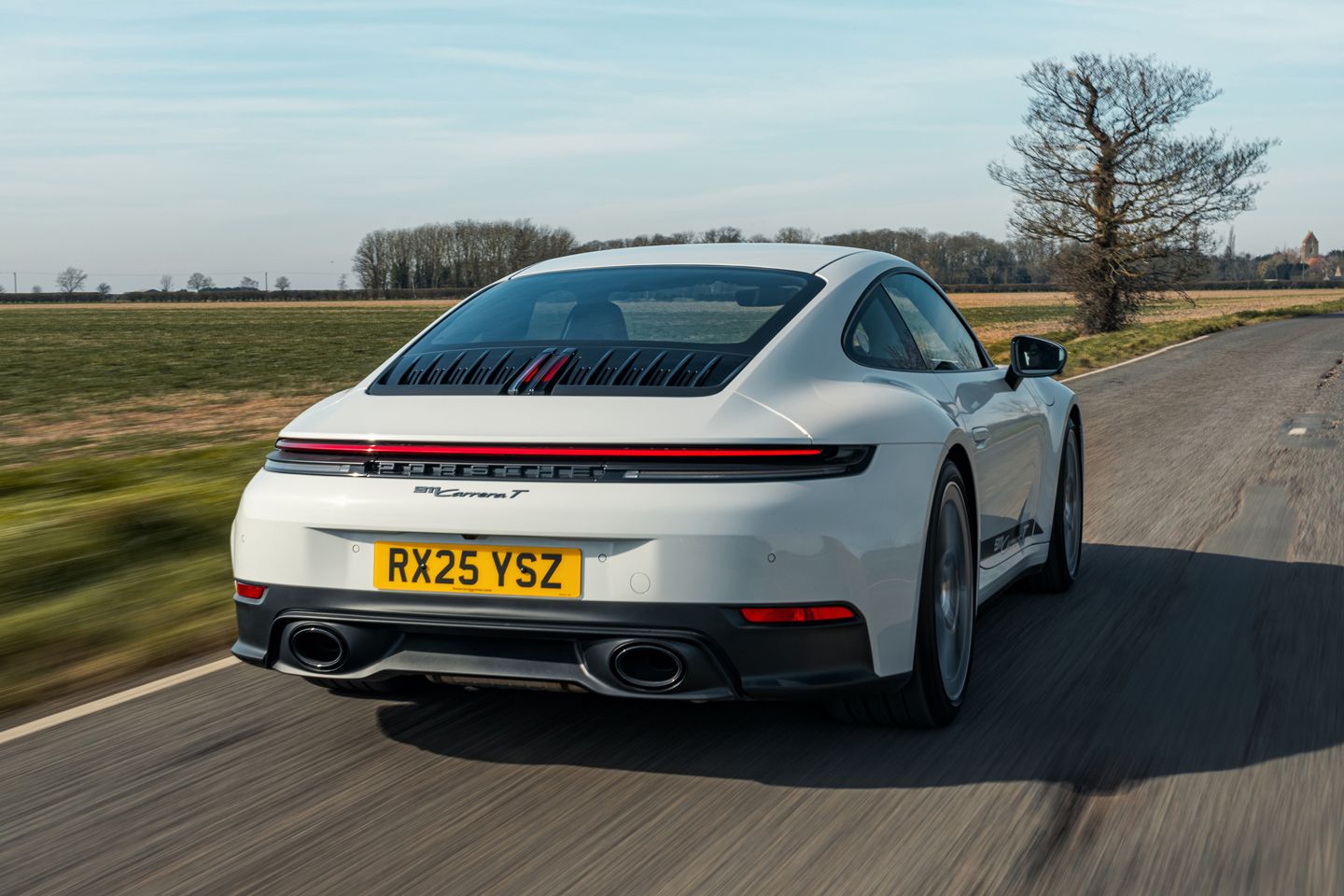
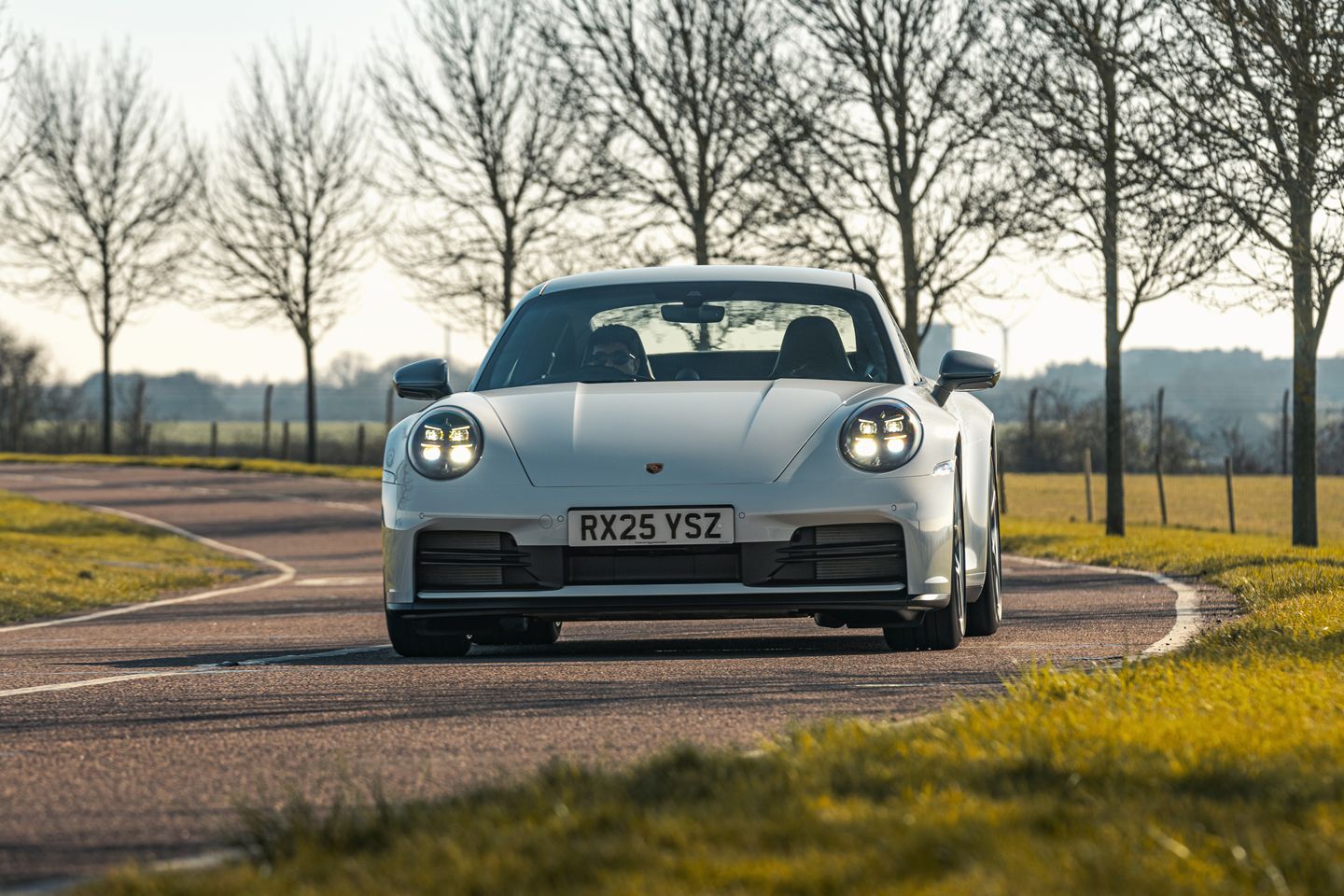
Because the old seven-speed has gone – as you might have heard – replaced by a six-speed evolution of the same unit. No more getting fifth or sixth from top before going further down the ‘box. In addition, with the Carrera S now PDK only, the T is the only manual 911 below the GT3, so Porsche is inevitably forcing the point home: logos on the dash, stickers on the glass, wood for the gearknob. It’s almost a surprise not to find #SaveTheManuals across the sunstrip and some gag about leg day on the dials. Still, in this day and age, a six-speed, three-pedal 7,500rpm sports car is surely a cause we can all get behind, no matter the confetti.
The old seven-speed wasn’t quite worthy of manual decals and shifter trying to recall a 917 – this is much more the ticket. Every movement is short, weighty, and satisfying; particularly the second-to-third across the gate and third-to-fourth you’ll be using so much on a good road. Then it’s much simpler than before to grab top for a cruise, even if block shifting doesn’t seem to suit. All the more reason to get every ratio on the way up and down. Truth be told, those familiar with the seven-speed will recognise the feel here – which is to say precise, rewarding, and slick – but memory says similar setups in 718s and GT cars are better still. Sometimes there’s a slight awkwardness between fourth and fifth, for example, because third isn’t far away, perhaps a slight hangover from having five indents at the top of the gate. But it’s like saying bronze is the third-best Olympic medal: basically, better than pretty much the rest of the world. This is a very good manual, helped as always in a Porsche by the location of lever and pedals.
Sometimes when a manual is added to a car that’s often automatic, it exposes an engine ill-suited to human interference – not the case here. The twin-turbo, 3.0-litre flat-six is happy to accommodate whichever approach you’d prefer with the manual. It’ll tolerate dawdling around like a minicab, it has the kind of mid-range muscle a 4.0-litre Cayman could only dream of (plus a second and third gear to take proper advantage), while also really rewarding to rip beyond 7,000rpm. Peak power is officially made at 6,500rpm, and if not a GT3-esque final 1,000rpm, then it doesn’t feel a waste clipping 7,500rpm. It’s a pleasure, in fact.
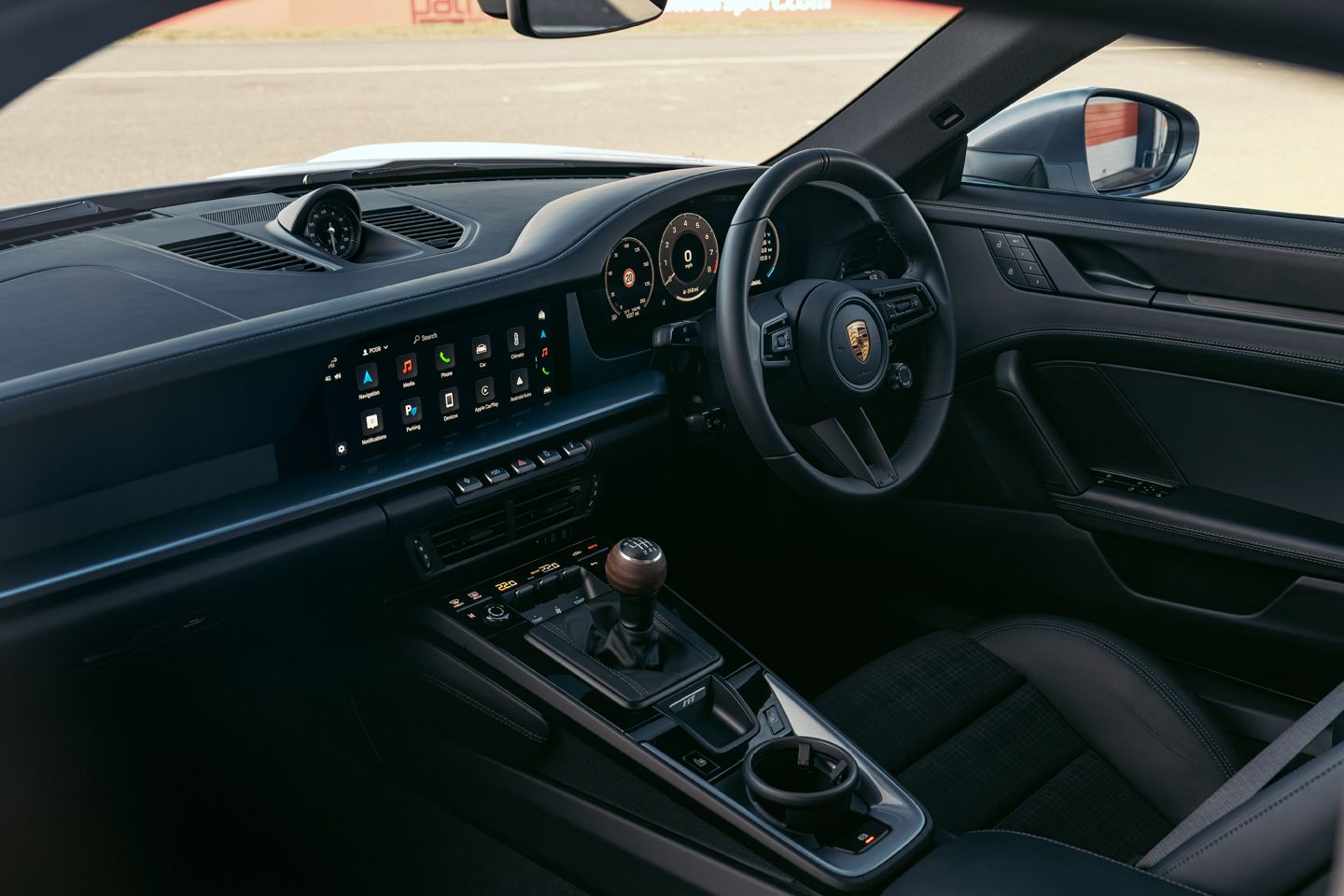
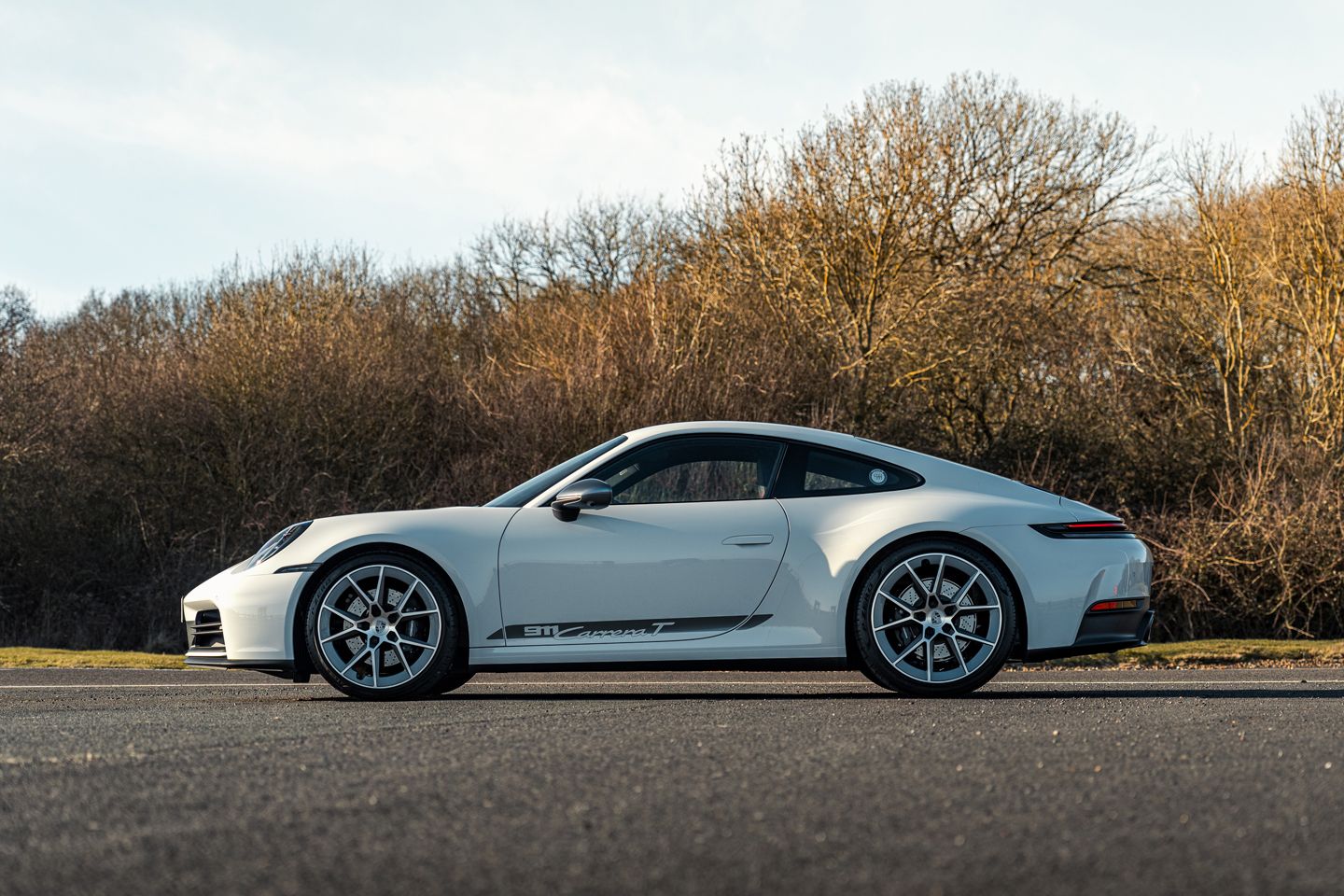
In the Normal drive mode with the sports exhaust on, the T is a joy. In a perfect world, it wouldn’t feel so exotic to be driving around the place in a two-seat 911 with a clutch pedal, yet that is how it feels. The fact that it’s so sorted compels you to change gear more frequently and form a closer relationship without even thinking about it. This is a light 992 as well, at 1,490kg DIN (not bad going given that a 997 Carrera was 1,420 in the mid-’00s), so even with big wheels and a lower ride height, there’s sufficient squidge to the ride. Low speeds aren’t exactly its forte, even in the standard PASM setting, but there’s a suppleness and fluidity at higher speeds that eludes the heavier, angrier 911s in the range. The Sport setting for the dampers doesn’t really feel necessary for road use, though nor does it ruin the ride.
On a good road, in the sunshine, the Carrera T makes a compelling case for itself. Because it’s a 992, it always feels a bit too big – but you hardly dwell on it when there’s so much character to dwell on, from the quality of the gearshift to the poise of the chassis. In a world of increasingly complex 911s – of more complex cars than ever – it’s nice to be reminded of the (relatively) simple joys. Maybe this isn’t a truly touchy-feely sports car experience, though if we’re honest the Carreras haven’t been that since the introduction of the 991. That doesn’t stop it from being a properly enjoyable one, however, especially given the constraints on carmaking these days.
The Cayman GTS comparison can’t be avoided, though, even with the price difference – after all, we’re talking about a pair of 400hp, six-speed, rear-drive Porsche sports cars. And while it would be true to say that the 718 is the more compact, more exciting road car experience, there’s no getting away from how useful the forced induction torque is in the 911 (332lb ft isn’t much more than 310lb ft, sure, but being available from 1,900rpm instead of 5,000 makes all the difference). It means you can short-shift and not feel short-changed, whereas the 4.0-litre unit is undoubtedly best enjoyed in its upper reaches. The no-cost-option rear seats shouldn’t be ignored in the 992 either, and nor can a more contemporary interior. It’s a very persuasive package, in the way that manual 911 Carreras always were before we became obsessed with Sport Response and launch control.
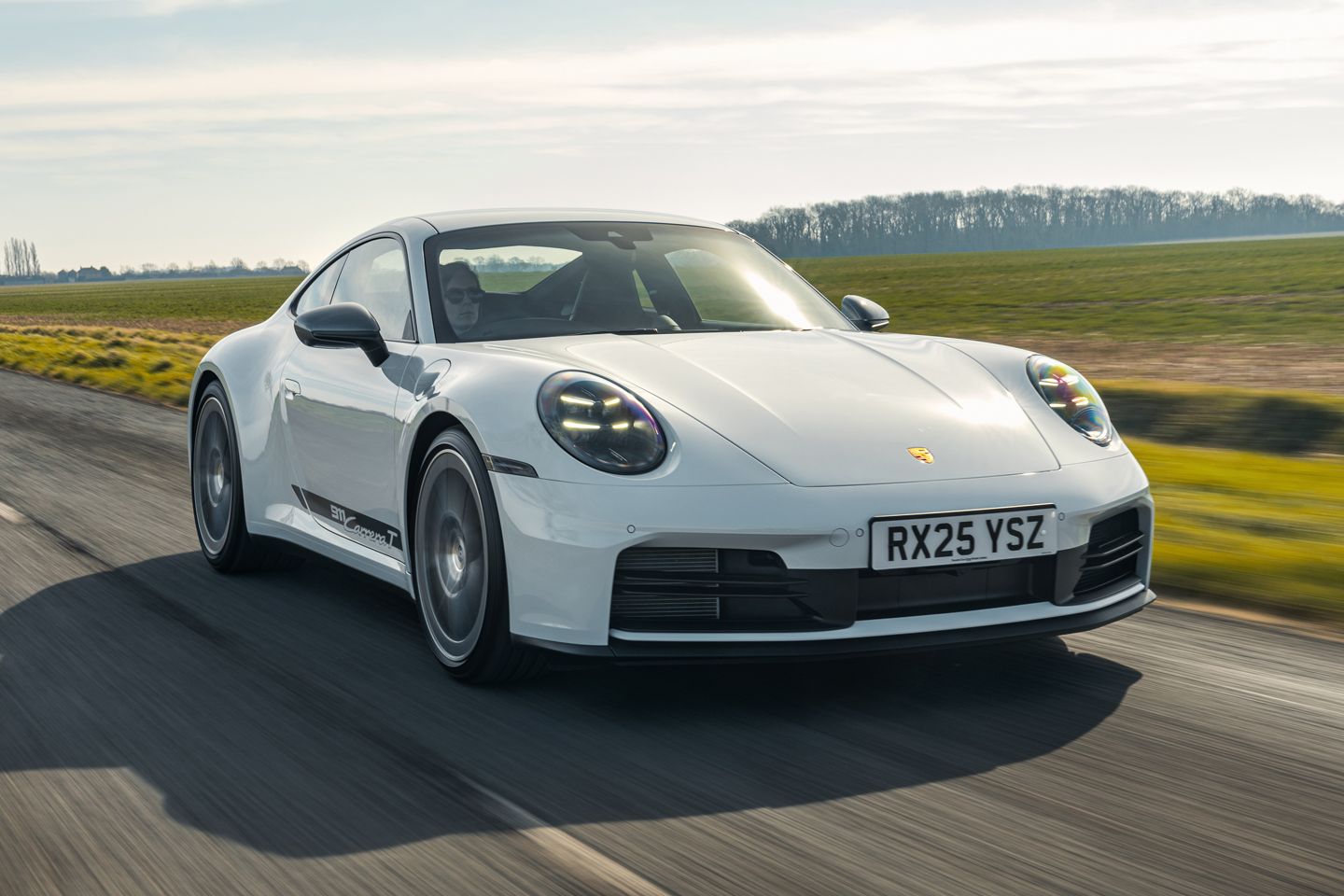
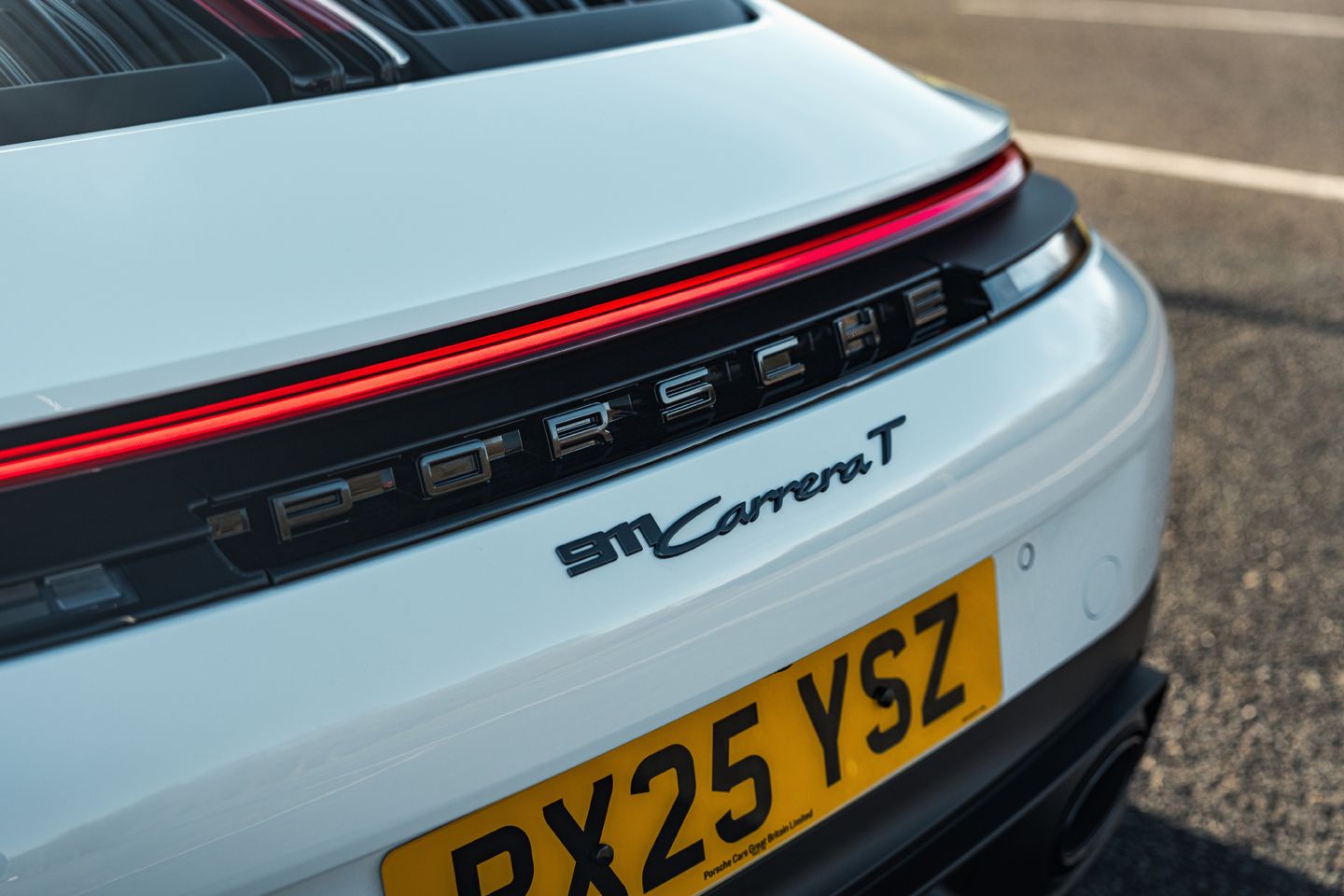
Genuine gripes are mostly predictable. Though the new gearbox permits a comfy 2,500rpm cruise, there is still the road roar that’s become a 992 calling card. Maybe it’s a bit easier to accept in a more overtly sporting derivative. Related to that, 305-section rear tyres feel a bit like overkill on a 394hp car; it’s hard not to think that refinement could be improved and the handling enlivened with less than two feet of rubber across the back axle. And it wouldn’t be a Porsche manual review without mentioning the ratios; the length of each gear here actually fits the character of the car just fine, in a way they don’t with the 718s. Nevertheless, third will still take you into three figures. That happens with most six speeds these days, and fuel economy probably has to be factored in, though it’s no less disappointing whichever maker does it.
Regardless, this 992.2 is the best manual Carrera in yonks. There was a danger that the old-school transmission might clash with a thoroughly contemporary sports car, but not a bit of it – the six-speed has been thoughtfully integrated, and the car usefully optimised, to bring out the most from the experience. A regular Carrera can feel a tad flat after the monstrous T-Hybrid, and a 480hp S is £20k more than the standard car. The T neatly splits the difference and in its transmission offers a level of interaction none of those models can. It sits the 911 range more comfortably, more enticingly, than it ever has.
SPECIFICATION | 2025 PORSCHE 911 CARRERA T
Engine: 2,981cc, flat-six, twin-turbo
Transmission: 6-speed manual, rear-wheel drive
Power (hp): 394@6,500rpm
Torque (lb ft): 332@1,950-5,000rpm
0-62mph: 4.5 secs
Top speed: 183mph
Weight: 1,490kg (DIN)
MPG: 26.0-27.1
CO2: 237-246g/km
Price: £111,300 (price as standard; price as tested £118,423 comprising 18-way Adaptive Sports Seats Plus with memory for £2,429, Preparation for roof transport system for £51, Tinted HD Matrix LED lights for £2,562, Fire extinguisher for £129, ParkAssist including SurroundView for £729, BOSE Surround Sound for £1,223)

